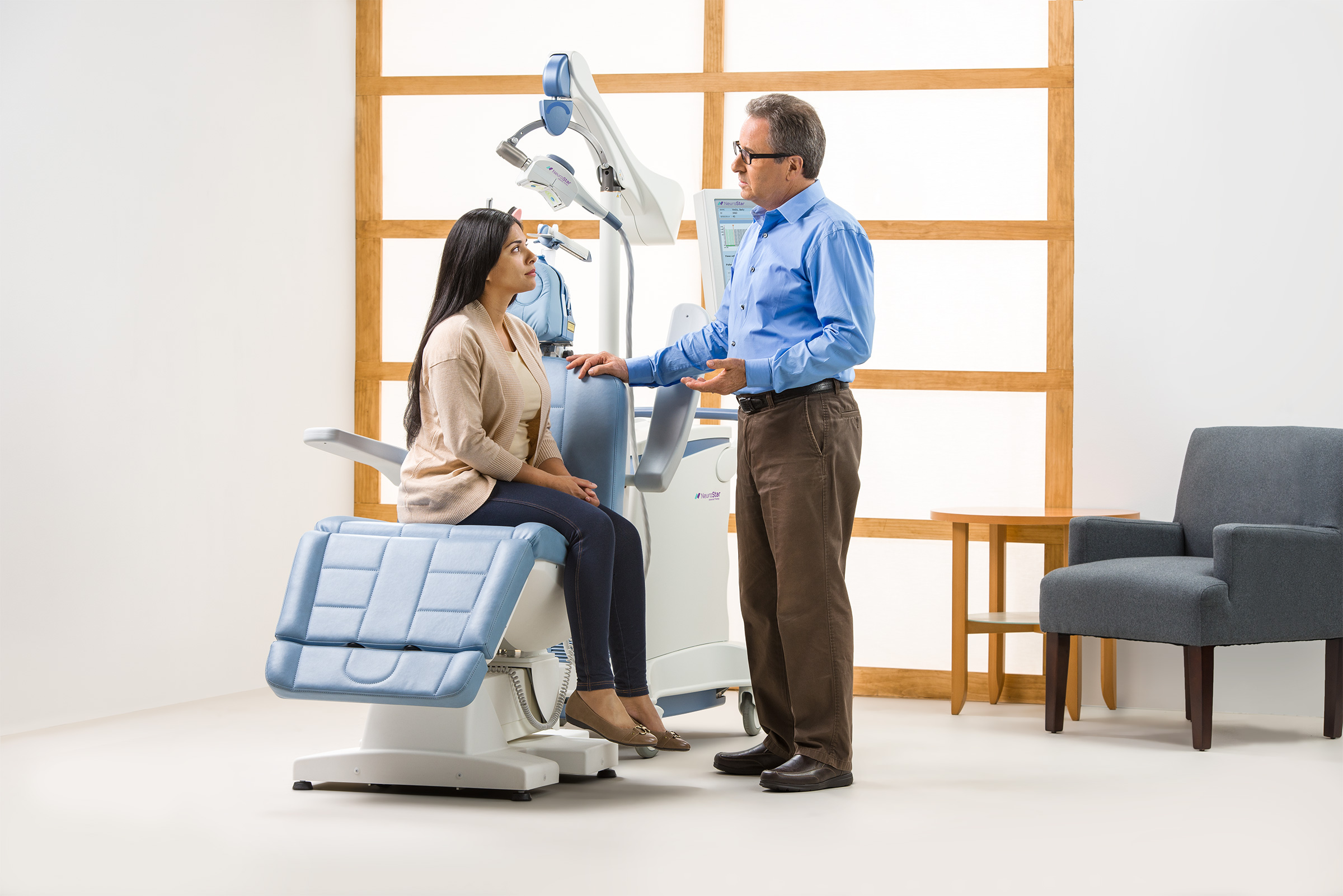- FREE Express Shipping On Orders $99+

What is TMS Treatment & Its Mechanism Action?
Transcranial magnetic stimulation (TMS) stimulates brain nerve cells to treat depression and other neurological problems without surgery. Putting a magnetic coil close to the head creates magnetic fields that stimulate certain parts of the brain. People who have not shown improvement with standard treatments like medicine and therapy typically consider TMS. In a non-hospital setting, one can typically perform the process without anesthesia. Studies have shown that TMS treatment can help reduce the symptoms of sadness, and it does so with fewer side effects than other treatments.
TMS Therapy
Therapy for brain stimulation includes transcranial magnetic stimulation (TMS). A noninvasive treatment that stimulates nerve cells with electromagnetic pulses may relieve neurological or mental health issues. TMS mostly treats depression. It works for patients who don’t respond to antidepressants and psychotherapy. Other illnesses, including anxiety and Parkinson’s disease, may benefit from TMS. Some terms refer to TMS as repeated transcranial magnetic stimulation (rTMS) because it involves electrical impulses. The terms are generally interchangeable.
What is the Work Time & Benefit Duration?
For therapeutic benefits, 20–30 sessions over consecutive weekdays are recommended; however, patients may see changes earlier. Taking multiple drugs helps preserve therapy benefits. Some patients may need maintenance TMS (spaced treatments) to maintain their improvement. You should get customized treatment from the best TMS clinic in Dallas.
How Do You Prepare?
Before rTMS, you may need:
- Physical, and potentially lab or other exams.
- Mental health evaluation for depression.
Tell your doctor if:
- You are or plan to be pregnant.
- Your body has metal or implanted medical gadgets. People with metal implants or gadgets may have rTMS. Some people using these devices shouldn’t use rTMS due to its powerful magnetic field.
- Clip or coil aneurysms.
- Stents.
- Implanted stimulators.
- Vagus nerve or DBS implants.
- Pacemakers, medication pumps, etc.
- Monitor brain activity with electrodes.
- Cochlear hearing implants.
- Magnetic implants.
- Pieces of bullets.
- Other metallic implants.
- Seizures or epilepsy run in your family.
- You have bipolar disorder, psychosis, or alcohol or drug problems.
- Injury to the brain, brain tumors, and trauma to the brain can all hurt the brain.
- Frequent or severe headaches.
TMS Treatment Process
To safely change brain activity in areas linked to mental health, TMS treatment uses electromagnetic fields. Depression and OCD are tied to irregular activity in the bilateral and dorsolateral prefrontal cortex and anterior cingulate cortex, respectively.
A typical TMS session lasts 20–40 minutes. The patient sits in a comfy chair while the TMS operator focuses electromagnetic fields on the specific brain location throughout each session. TMS treatment typically involves daily sessions for four to five weeks and maintenance sessions.
TMS therapy creates a more steady rhythm of activation in targeted brain areas by transmitting electromagnetic fields, reducing the frequency and severity of the patient’s symptoms, and enhancing their well-being. TMS is useful as a standalone treatment, but its noninvasive nature permits it to be coupled with psychopharmacology to boost treatment success. Due to its lack of anesthetic and recuperation time, TMS can be included in the patient’s regular routine, and they can drive themselves to and from treatment.
Transcranial Magnetic Stimulation Treats What Conditions?
TMS is FDA-approved for four disorders:
- Depression is resistant to treatment.
- OCD
- Migraine treatment in dallas
- Smoking addiction
TMS’s role in treating different brain disorders. TMS is being researched for:
- Bipolar disorder
- PTSD
- BPD
- Schizophrenia
- Eating disorders
- Long-term discomfort
- Disease Alzheimer’s
- Fibromyalgia
- Tinnitus
- Parkinson’s
- Brain trauma
- Stroke complications
TMS Side Effects
TMS side effects include:
- Headache
- Painful scalp
- Facial muscular tingling, spasms, or twitching
- Lightheadedness
- Rare side effects:
- Seizures
- Bipolar disorder patients often suffer from hypomania or mania.
Who Should Not Get TMS?
The magnetic field generated by TMS may interact with metal devices, implants, or injuries, making it unsafe for some people. Some examples are:
- Aneurysm coils/clips
- Stents in the brain as well as the neck A metallic device in the ear or eye
- Near-head bullet fragments
- Magnetic-ink facial tattoos
- DBS-like implanted stimulators
Conclusion
TMS treatment may help people with serious depression, OCD, migraine, or smoking addiction who have failed traditional therapy. It’s also being researched for bipolar illness, PTSD, borderline personality disorder, and schizophrenia. Are you looking for the best TMS treatment near me? Always choose a reliable source.
